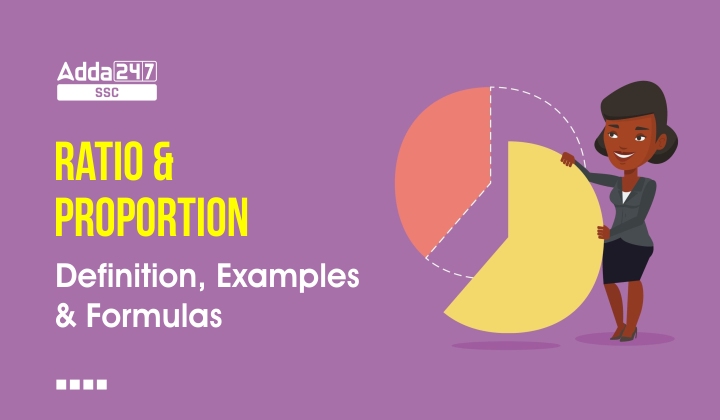Table of Contents
Ratio and Proportion
Ratio and Proportion: Ratio and Proportion is one of the important scoring topics of Quantitative Aptitude. There are several examinations such as SSC CGL, SSC CHSL, etc. lined up in the upcoming months, candidates must have started preparing for the tougher sections thoroughly. Quantitative ability questions are asked in almost every government job examination with a special focus on ratio and proportion. Here we are providing you with quick revision notes on Ratio and Proportion including definitions, formulas, tips, and tricks for solving the questions.
Ratio and Proportion
Ratio and Proportion are fractions. When a fraction is represented in the form of a:b, then it is a ratio while a proportion states that two ratios are equal. Here, a and b are any two integers. Ratio and proportion are the two important concepts, and it is the foundation for understanding various concepts in mathematics.
What is Ratio?
The ratio can be defined as a relationship between two quantities such as a:b, where b is not equal to 0. The two numbers in a ratio can only be compared when they have the same unit. Ratios are used to compare two things. A ratio is denoted by the sign ‘:’. Ratio can be represented as follows.
- a to b
- a:b
- a/b
For Example, the ratio of 4 to 8 is represented as 4:8 = 1:2. And the statement is said to be in proportion.
What is Proportion?
Proportion is an equation that defines that the two given ratios are equivalent to each other. In proportion, if two sets of given numbers are increasing or decreasing in the same ratio then, the ratios are said to be directly proportional to each other.
There are 3 types of Proportion i.e.
- Direct Proportion
- Inverse Proportion
- Continued Proportion
Ratio and Proportion Formula
- Proportion Formula
- Fourth Proportion
Example. Find the fourth proportion to the numbers 4, 10, and 12.
- Third Proportion→
Find the third proportion to the numbers 4, 12.
Mean Proportional
Ratio and Proportion Examples
Find the mean proportion of 4, 16?
- If two numbers are in the ratio a: b and their sum is x, then these numbers will be
- If three numbers are in the ratio of a : b : c and there sum is x then the numbers are
- If a : b = n₁ : d₁ & b : c = n₂ : d₂
Example. If A : B = 3 : 5 & B : C = 9 : 10, find A : B : C.
- If a : b = n₁ : d₁ , b : c = n₂ : d₂ , c : d = n₃ : d₃
Example. If A : B = 2 : 3, B : C = 4 : 5, C : D = 6 : 7. Find A : B : C : D.
- If the ratio between two numbers is a: b & x is added to both of them then the ratio becomes c : d. Then the two numbers are given by:
Example. If two numbers are in the ratio of 3: 4. If 8 is added to both numbers, the ratio becomes 5: 6. Find the numbers.
- If the ratio of two numbers is a: b, then the number that should be added to each number to make the ratio c : d is given by
Example. Find the number that should be added to the numbers in ratio 11: 29, to make it equal to 11:20?
- The incomes of two persons are in the ratio → a: b and their expenditures are in the ratio → c : d. If the savings of each person is S, then their incomes are.
Example. The annual salary of A & B are in the ratio of 5: 4 and their annual expenses bear a ratio of 4 : 3. If each of them saves Rs. 800 at the end of the year. Find their Incomes.
- When two ingredients A & B of quantities q₁ & q₂ with cost price/unit c₁ & c₂ respectively are mixed to get a mixture c having cost price cm/unit then.
Example. In what ratio two kinds of tea must be mixed into one at Rs. 9/kg and another at Rs. 15/kg, so that the mixture may cost Rs. 10.2/kg?
Example. In a mixture of two types of oils O₁ & O₂ the ratio O₁: O₂ is 3: 2. If the cost of oil O₁ is Rs. 4/L and that of oil O₂ is Rs. 9/L. Then find the cost of the resulting mixture?



 Upcoming Government Exams, Complete Govt...
Upcoming Government Exams, Complete Govt...
 Govt Jobs 2025, Latest Upcoming Governme...
Govt Jobs 2025, Latest Upcoming Governme...
 RRB JE 2024 Notification, Exam Date Out ...
RRB JE 2024 Notification, Exam Date Out ...


